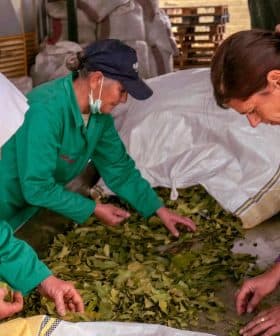Fact Check: 3 Common Myths About Olive Oil Quality
Olive oil is deeply ingrained in Mediterranean culture, but common misconceptions about acidity, color, and filtration persist. Acidity cannot be tasted, color does not indicate quality, and filtering can impact the shelf life and health benefits of extra virgin olive oil. Human sensory analysis remains the most reliable method for evaluating the quality of olive oil.
Olive oil is tightly woven in the culture of Mediterranean populations and, though in recent decades we have witnessed an exceptional evolution in production methods as often happens to activities interconnected with ancient traditions, it is also subject to a series of die hard clichés.
We often hear someone asking: “That olive oil is so spicy. Will it not be too acidic?” Or, “It has a wonderful color. Surely it is delicious.”
Let’s dispel some confusion about three fundamental characteristics of liquid gold to make the most of its benefits and encourage careful and scrupulous producers. Here are some of the most common myths:
1. Acidity can be perceived by tasting: False.
The acidity is due to free fatty acids present in olive oil and it is expressed in percentage of oleic acid. This parameter can be defined only by laboratory testing and it is odorless and tasteless, so you cannot perceive it by tasting and you must never confuse it with the bitter taste and the pungent sensations that are distinctive attributes of a good extra virgin olive oil. In most cases, the more these features are pronounced, the lower the acidity.
Pungency and bitterness are produced by phenolic compounds responsible for the extraordinary health qualities of extra virgin olive oil, such as oleocanthal — an anti-inflammatory and anti-tumor substance named by researchers from Latin: oleo=olive, canth=sting, al=aldehyde for the “stinging” flavor it gives to fresh EVOO.
2. The color is indicative of quality: False.
EVOO can have different shades of color ranging from golden yellow to dark green that depend on the olive cultivars, the degree of maturation of the olives and factors relating to the production processes. Color is not an indication of quality.
That’s why sensory analysis of olive oil requires a special cobalt blue glass, to avoid the influence of color on the all-important sensory assessment.
3. Unfiltered olive oil is more genuine and healthy than filtered olive oil: True and False.
The olive oil we obtain at the end of the extraction process is a product rich in particles of olives — pulp and stone. If not filtered, these tiny pieces initially induce a slight increase of nutritional content.
As time goes by, however, they will reduce, even dramatically, the shelf life ofextra virgin olive oil because they will sediment on the bottom and accelerate the oxidation and the consequent loss of healthful elements. Filtering is important to maintain stability and preserve the healthy qualities.
It is important to clarify that the sensory analysis is the only reliable way to assess quality of extra virgin olive oil. Only a few features are detectable by laboratory testing, but the condition of extra-virginity can be perceived only according to our olfactory, retro-nasal and gustatory perceptions. Panel opinion is in fact an essential and fundamental element for evaluation in competitions and certifications in general.
In short, no laboratory, nor any machine has so far been able to replace human senses in the analysis of EVOO.









